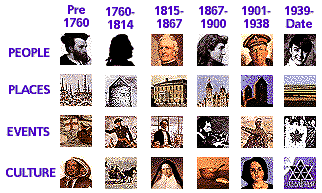

![]()

|
Canadisk '95
Granit Technologies Inc.
Grades 5 and up / Ages 10 and up.
*/4
|
Encyclopedias on CD-ROM are all the rage in schools these days. Kids want to use the new technology so much they are often surprised to find that there is more information the printed version of a publications. In response to this demand encyclopedias, almanacs, and every subject area are now presented on CD-ROM.


Recommended with reservations.
Harriet Zaidman is a teacher-librarian in Winnipeg.
Note: Images posted with this review are from the Canadisk World Wide Web site, not from the CD-ROM. To comment on this title or this review, send mail to cmeditor@mts.net.
![]()
Copyright © 1996 the Manitoba Library Association.
Reproduction for personal use is permitted only if this copyright notice
is maintained. Any other reproduction is prohibited without permission.
Published by
The Manitoba Library Association
ISSN 1201-9364
![]()